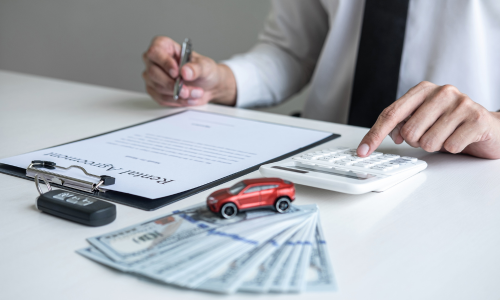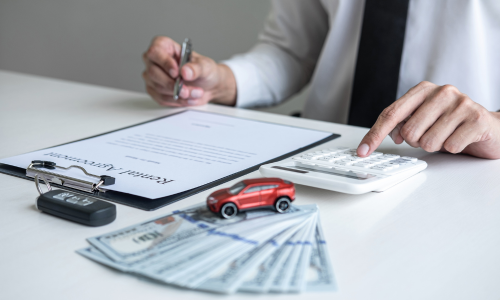How to Lower Your Car Insurance Premium with These Simple Lifestyle Changes

Car insurance is a crucial investment that protects you financially in the event of an accident, theft, or damage to your vehicle. However, many drivers find themselves paying more than necessary for their coverage. Premiums are typically determined by factors such as your driving history, the type of vehicle you own, and where you live. While these factors are often out of your immediate control, there are several lifestyle changes you can make that could significantly reduce your car insurance premiums.

From driving less to maintaining a good credit score, simple adjustments to your daily habits can have a big impact on what you pay for car insurance. The good news is, lowering your premium doesn’t mean sacrificing coverage or protection. By making mindful changes in how you drive, maintain your vehicle, and even where you live, you can save money on your policy without compromising on your car’s safety or your peace of mind.
In this blog, we’ll explore practical and effective lifestyle changes that can help you lower your car insurance premiums while still keeping the coverage you need. With these strategies, you can take control of your insurance costs and enjoy long-term savings.
Drive Less: The Impact of Lower Mileage
One of the easiest ways to lower your car insurance premium is to drive less. Many insurance companies base part of your premium on how much you drive annually. The logic behind this is simple: the more time you spend on the road, the greater the chance of being involved in an accident. High-mileage drivers are statistically at higher risk, which makes them more likely to file claims, leading to higher premiums.
Reducing your mileage can significantly lower your rates. Even small reductions in your annual mileage can translate to savings. For example, if you only drive for short trips or occasional errands, you may qualify for discounts with certain insurance providers.
Here are some practical tips to help reduce your mileage:
- Carpooling: Share rides with coworkers, friends, or family members to reduce the number of days you drive alone.
- Telecommuting: If possible, work from home a few days a week to cut down on your commute.
- Public transportation: Take advantage of buses, trains, or bike lanes to get around, especially if you live in an area with reliable public transit.
- Combine errands: Plan your trips so you’re able to accomplish multiple tasks in one outing, reducing the need for frequent short drives.
Keep Your Vehicle Well-Maintained
Regular maintenance is key not only to keeping your vehicle running smoothly but also to maintaining a good driving record and keeping your insurance premiums low. A well-maintained car is less likely to break down, and it’s also less likely to be involved in accidents due to mechanical failure. Insurance companies recognize that properly maintained vehicles are safer, and they may offer lower premiums to drivers who take care of their cars.
Key maintenance tasks that can help lower your rates include:
- Regular oil changes: A well-lubricated engine is less prone to overheating or seizing, reducing the likelihood of an accident caused by mechanical failure.
- Tire maintenance: Checking tire pressure and replacing worn-out tires can prevent blowouts and improve traction, especially in poor weather conditions.
- Brakes and lights: Ensure that your brake pads, brake fluid, and headlights are in good condition. This reduces the risk of accidents and makes your car safer to drive.
In addition, upgrading your vehicle with advanced safety features—like automatic emergency braking, lane departure warnings, and adaptive headlights—can make you eligible for discounts with some insurers. These modern safety technologies lower the risk of accidents, and insurance companies often reward drivers for having cars with these systems.
Improve Your Driving Habits
Your driving behavior plays a significant role in determining your car insurance premium. Aggressive driving, such as speeding, tailgating, or making sudden stops, increases the likelihood of accidents and insurance claims, which can result in higher premiums. Insurance companies evaluate your driving style to gauge how risky you are to insure.
To lower your premiums, focus on adopting safer driving habits:
- Avoid speeding: Stick to speed limits and avoid speeding to reduce your risk of accidents and tickets.
- Smooth acceleration and braking: Sudden acceleration and hard braking put more strain on your car and increase the chances of an accident. Drive smoothly to reduce these risks.
- Stay calm in traffic: Avoid aggressive behaviors like tailgating or weaving between lanes. Instead, focus on maintaining a safe distance and staying patient during traffic.
Taking a defensive driving course can also help lower your premiums. Many insurers offer discounts to drivers who have completed an accredited defensive driving course, as it shows that you’re proactive about safe driving.
Consider Your Location
Where you live has a direct impact on your car insurance premium. Urban areas tend to have higher premiums due to factors like traffic congestion, higher rates of accidents, and the increased likelihood of theft. In contrast, rural areas typically see lower rates because there’s less traffic and fewer accidents.
However, regardless of where you live, you can mitigate location-based premiums by:
- Parking in a secure location: If possible, park your vehicle in a garage or a well-lit, secure area to reduce the risk of theft or vandalism.
- Avoiding high-risk areas: Try to avoid driving in high-risk areas known for accidents or car theft, as insurers may charge more if you live in a neighborhood with higher rates of claims.
If you live in an area prone to extreme weather, such as floods or snowstorms, consider storing your car in a safe place during harsh conditions to avoid weather-related damage.


